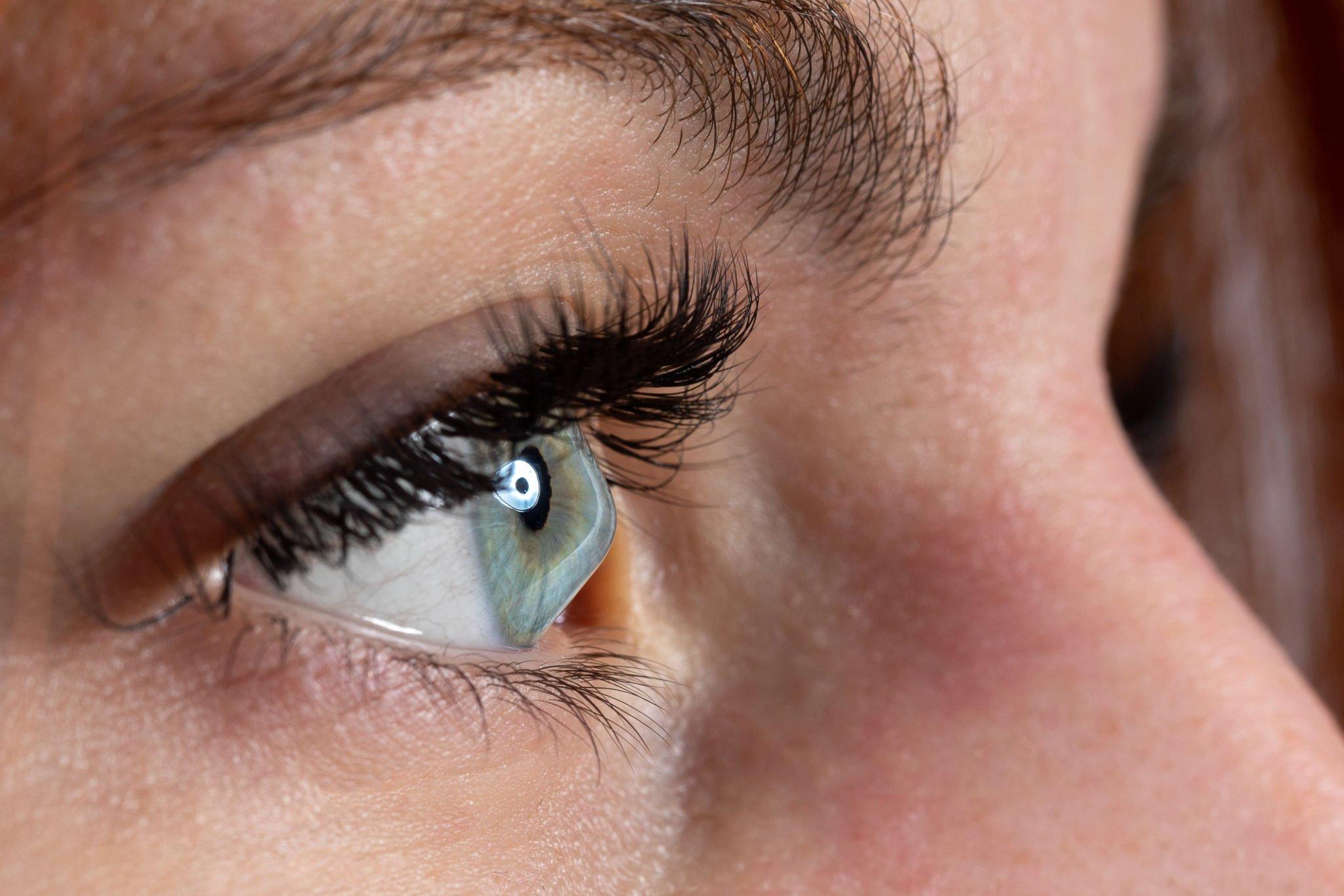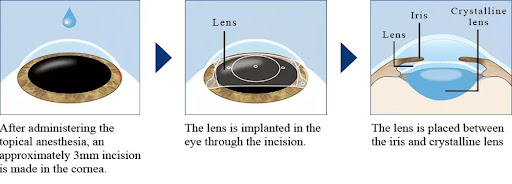Keratoconus is a progressive eye disorder that affects the cornea—the clear, dome-shaped front of the eyes. In individuals with Keratoconus, their cornea gets thinner and gradually bulges outward in a cone-like shape. When this happens, it can lead to distorted vision and impact the affected individual’s everyday life.
Fortunately, Eyeonce Eye Clinic’s proficient eye doctors, Dr. Paik Dong Won and Dr. Jung Sae Rom provide early diagnosis and timely treatment, which are crucial in managing this condition. They also deliver tailored treatment plans to address their patient’s unique conditions using the latest technologies.
Symptoms
It is crucial to note that Keratoconus symptoms vary for every individual. In the early stages, they appear to be mild and easily overlooked. However, as the condition progresses, the symptoms become more noticeable and can present in:
- Blurred vision – As the cornea becomes progressively thinner and more irregularly shaped, it affects how light enters the eye, resulting in blurred vision.
- Distorted vision – Individuals with Keratoconus may experience distorted or warped vision where straight lines may appear wavy or bent, making it challenging to perform everyday tasks.
- Frequent changes in eyeglasses prescription – Since Keratoconus is a progressive eye condition, individuals affected by it find that their eyeglass prescription needs to be updated frequently.
- Increased light sensitivity (photophobia) – When the cornea becomes thinner and more sensitive, people having Keratoconus may become more sensitive to bright lights, resulting in discomfort or excessive squinting in a well-lit environment.
- Halos and glare around lights – Individuals with Keratoconus may experience halos and glare around lights, especially at night or in low-light conditions. If left untreated, it can further impair vision.
- Eye redness and irritation – The cornea’s irregular shape can cause friction between the eyelids and the corneal surface, leading to eye redness, irritation, dryness, and scratchiness.
- Difficulty wearing contact lenses comfortably – As the cornea becomes more conical, contact lenses may not fit properly on the eye, leading to discomfort and difficulty wearing them for a prolonged period.
- Frequent eye rubbing – People with Keratoconus may unconsciously rub their eyes excessively due to eye discomfort, which can exacerbate the condition and accelerate its progression.
- Decline night vision – Individuals may notice a decline in night vision, making it challenging to see clearly in low-light or nighttime conditions.
If you are experiencing these symptoms, seek professional help from a trusted eye center like Eyeonce Eye Clinic. Their ophthalmologists can provide appropriate diagnosis and appropriate management to address your condition.
Causes
While there is no known cause for Keratoconus, several factors have been associated with the development of this eye condition, such as:
- Genetics – Studies have shown that individuals with a family member affected by Keratoconus have a higher risk of developing the condition. It is due to the specific genetic mutations that may make the cornea more susceptible to weakening and thinning.
- Oxidative stress – It refers to an imbalance between the production of free radicals and the body’s ability to neutralize them with antioxidants. Free radicals can damage collagen and other cornea proteins, leading to progressive thinning and bulging.
- Eye rubbing – Chronic eye rubbing can weaken the corneal structure and aggravate the condition, particularly in individuals already predisposed to the disorder.
- Hormonal imbalances – Hormonal fluctuations during puberty or pregnancy may affect the condition’s progression.
- Allergies and eye conditions – Allergies and chronic eye irritation or inflammation may contribute to the development of Keratoconus. The constant rubbing of the eyes due to allergies or other eye conditions can weaken the cornea.
- Enzyme abnormalities – Studies have shown that enzyme abnormalities in the cornea could lead to structural changes causing it to become thin and distorted.
- Collagen abnormalities – Any abnormalities in the structure and organization of collagen fibers within the cornea can lead to progressive thinning and bulging.
If you suspect having these symptoms, talk to Eyeonce’s eye care professionals for a comprehensive examination and personalized treatment plan.
Diagnosis and Treatment
At Eyeonce Eye Clinic, our eye doctors diagnose Keratoconus following these processes:
- Slit-Lamp Examination – This examination allows our ophthalmologists to examine the cornea’s shape and detect any irregularities or thinning.
- Keratometry – This test measures the cornea’s curvature. In Keratoconus, the curvature becomes steeper, leading to an abnormal cone shape.
- Corneal Topography – A non-invasive imaging test creates a detailed map of the cornea’s surface. It aids in identifying specific changes indicative of Keratoconus.
- Pachymetry – This test measures the cornea’s thickness. In individuals with Keratoconus, their cornea is often thinner than usual.
After diagnosis, our eye doctors may provide you with treatments that best suit your condition, which include:
- Eyeglasses – Prescription glasses are prescribed for mild cases or early stages of Keratoconus.
- Contact lenses – Specially designed contact lenses like Rigid Gas Permeable (RGP) help improve vision by providing a smooth and regular corneal surface.
- Corneal Cross-linking (CXL) – It is a non-invasive procedure that strengthens corneal collagen. During CXL, riboflavin eye drops are applied to the cornea and exposed to UV light, which produces new collagen, increasing the cornea’s stability.
- Intacs implantation – These are small, transparent crescent-shaped devices implanted into the cornea to flatten the cone-shaped curve,
- Corneal transplant – This treatment is recommended for severe or advanced cases of Keratoconus. In this process, the damaged cornea is replaced with a healthy one.
At Eyeonce, we firmly require our patients with Keratoconus to have regular follow-up appointments to monitor their condition’s progression and adjust treatments as needed.
Why choose Eyeonce Eye Clinic Gangnam for Keratoconus treatment?
Utmost Patient Care
Our eye care professionals and staff ensure to give you your money’s worth. We guarantee you receive the best medication possible and assure you that you are guided and understood, making you feel comfortable and confident at every step.
Comprehensive Consultation
Eyeonce Eye Clinic offers comprehensive eye examinations to evaluate your condition and assess what Keratoconus treatment is best for you. Our ophthalmologists take their time to cater to your questions and address your concerns, ensuring you make an informed decision about our vision correction options.
Expert Eye Doctors
Our ophthalmologists, Head Director Dr. Paik Dong Won and Medical Director Dr. Jung Sae Rom, are highly knowledgeable and skilled in treating Keratoconus. They always use the latest techniques and technologies to ensure optimal results.
Frequently Asked Questions (FAQs)
While Keratoconus can cause significant vision impairment, it rarely leads to complete blindness. Most people can manage the condition and maintain functional vision with appropriate treatment.
Keratoconus often manifests in the late teenage years or early 20s; however, it may occur at any age.
Yes. Various treatments for Keratoconus are available, such as contact lenses, corneal cross-linking, corneal transplant, etc.
Conclusion
Keratoconus is a progressive eye disorder affecting the cornea, leading to distorted vision. While the exact cause is unknown, several treatment options can help compensate for your condition. If you want to learn more about these treatments, book an appointment with Eyeonce Eye Clinic’s eye doctors. You can also visit their website for more information.



